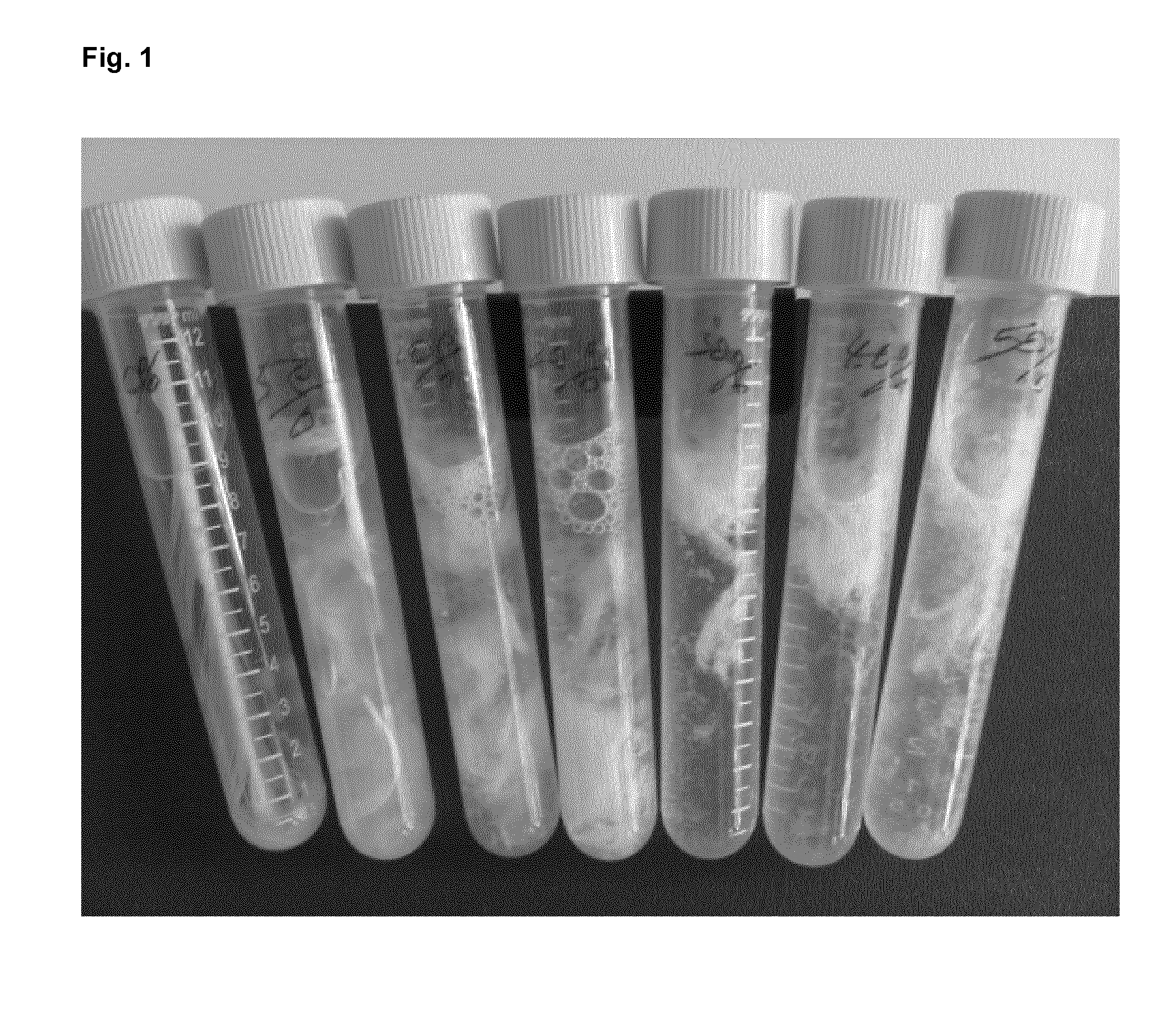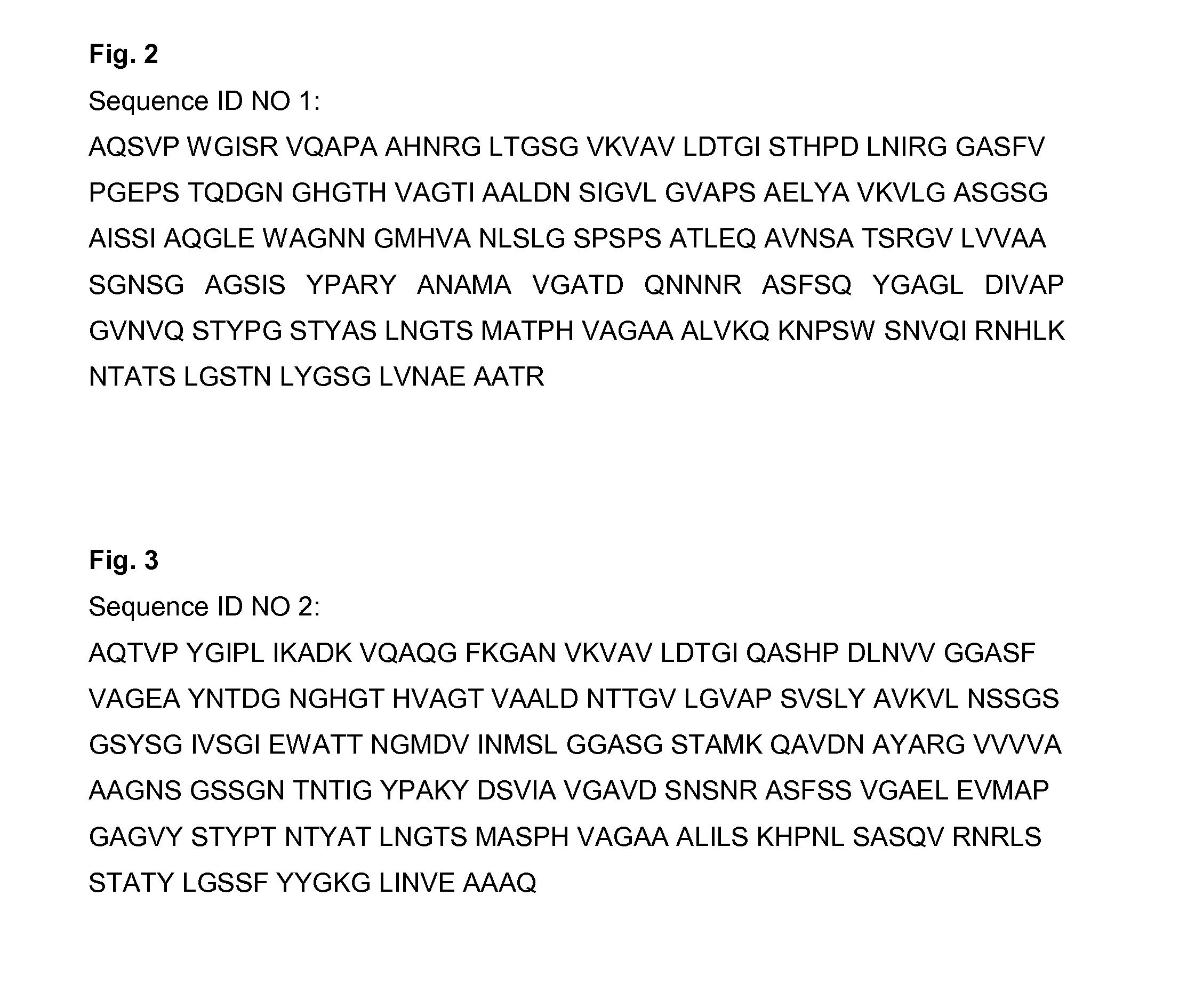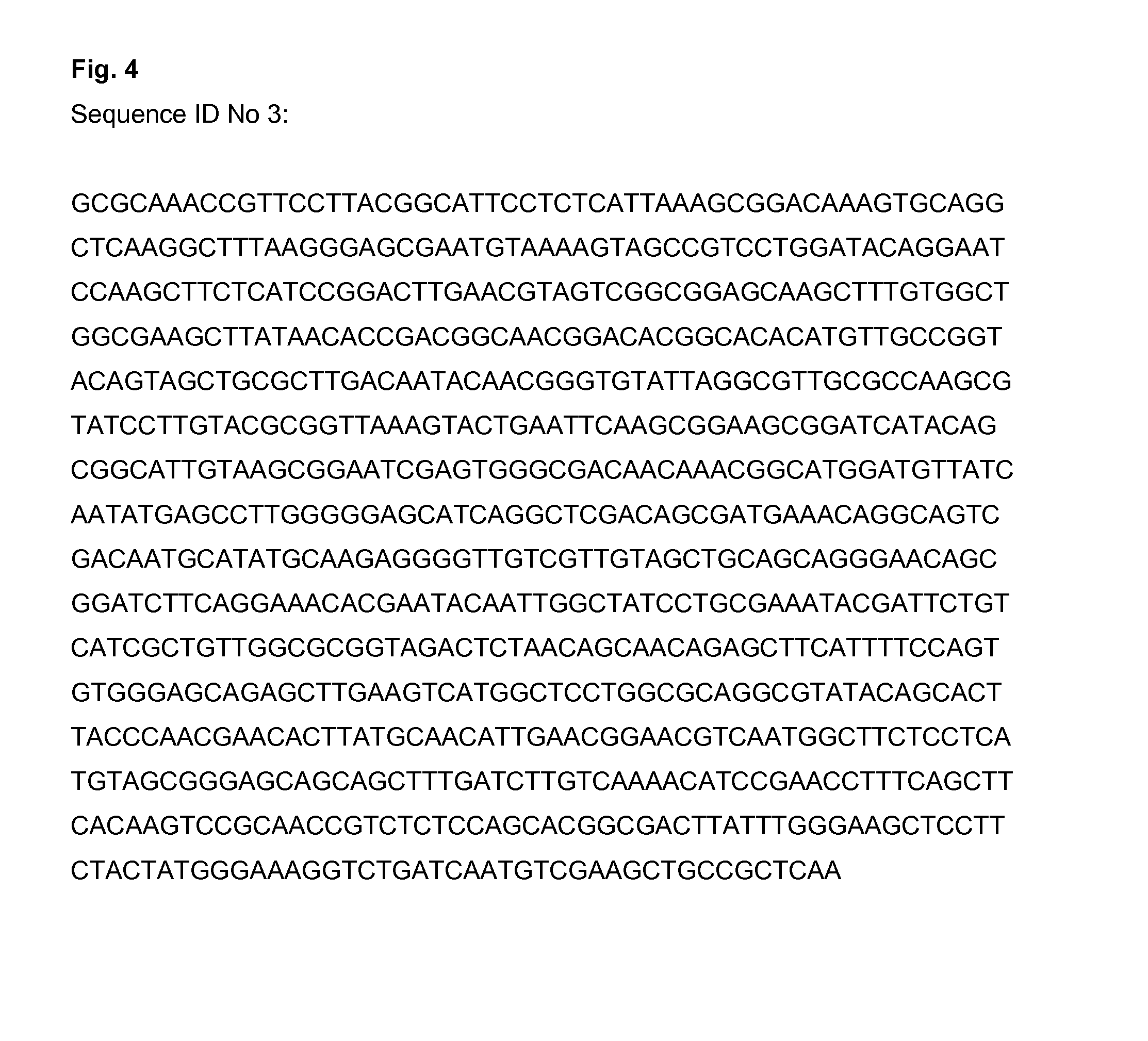Method
- Summary
- Abstract
- Description
- Claims
- Application Information
AI Technical Summary
Benefits of technology
Problems solved by technology
Method used
Image
Examples
example 1
[0331]To each of 613 ml plastic tubes was added 100 mg ground chicken feather (the rachis and hollow shafts are shorter than 0.5 cm by the grinding), 5 mg sodium bisulfate, 65 microliter Protex P. To tubes 1-3 were added 12 ml tap water pH 7.90, to tube 4-6 were added 12 ml tap water and sodium hydroxide to a final concentration of 0.7 mM and deaerated (bubbled with nitrogen gas). The tubes were closed tightly and incubated at 50° C. with shaking at 130 rpm for 16 h. The 6 tubes were then centrifuged at 4000 rpm and 0.2 ml of the supernatant obtained from each samples was filtered through 0.45 micron filter and 50 microliter of the each filtrate was measured at 280 nm as an indication for released peptides (see table 1 below). From the table below, one can see that deaeration by nitrogen bubbling and addition of sodium hydroxide to a final concentration of 0.7 mM of the reaction medium improved the peptide release by 21%.
TABLE 1StandardAbsorbance (280 nm)averagedeviationTube0.350.33...
example 2
[0332]For the alkaline protease treatment, the reaction mixtures contained 9 ml water, 1 ml tris-HCl (0.48M, pH8.5), one chicken feather, 150 microliter of Protex 30L (available from DuPont Industrial Biosciences ApS) and the reducing agent sodium bisulfite 20 mg. The reaction mixture was incubated at 50° C. with shaking at 100 rpm overnight (16 h) in a free fall mixer. For peracetic acid treatment, after the protease reaction, the reaction mixture of the Protex 30L treated feather was centrifuged and the precipitate was re-suspended in peracetic acid (cat no. 77240, Sigma-Aldrich, purum, around 39% in acetic acid) at various final concentrations (table below).
TABLE 2Tube no1#2#3#4#5#Protex 30 L treated feather1 ml1 ml1 ml1 ml1 mlsuspension39% Peracetic acid added00.2 ml0.5 ml0.9 ml1.0 mlWater added1 ml0.8 ml0.5 ml0.1 ml0 mlResults-1: 50° C. 16 hr with mixing followed by turbidity measurementTurbidity at 600 nm (optical density)0.7380.1210.0920.0400.047Results-2: The samples were th...
example 3
[0335]To each of six test tubes 100 mg Chicken feathers were added. MilliQ water was added and 39% peracetic acid (77240 Sigma-Aldrich) was then admixed to give a final peracetic acid concentration of 2-20% (v / v)—see Table 4 below. The 6 tubes were closed tightly and incubated on shaker at 50° C. and 80 rpm for 24 h.
TABLE 339% per acetic51020304050acid (ml), %Final peracetic2%4%8%12%16%20%acid concentrationWater added (ml)9.59876539% per acetic0.512345acid added (ml)ResultsAbsorbance at0.1750.2860.4330.5500.8530.990280 nm0.1830.2930.4090.5510.7930.981
[0336]Results:
[0337]From FIG. 1 it can be seen that the feather was degraded in from 2 to 20% (v / v) peracetic acid after 5 h reaction. After 24 h treatment, the tubes were centrifuged at 4000 rpm for 10 min and the supernatant 135 ul was mixed with 135 ul 10% trichloroacetic acid (TCA, v / v) and centrifuged again. The supernatant 25 ul was used to measure absorbance at 280 nm. As indicated in the table above, the absorbance of the supern...
PUM
| Property | Measurement | Unit |
|---|---|---|
| Fraction | aaaaa | aaaaa |
| Level | aaaaa | aaaaa |
Abstract
Description
Claims
Application Information
 Login to View More
Login to View More - R&D
- Intellectual Property
- Life Sciences
- Materials
- Tech Scout
- Unparalleled Data Quality
- Higher Quality Content
- 60% Fewer Hallucinations
Browse by: Latest US Patents, China's latest patents, Technical Efficacy Thesaurus, Application Domain, Technology Topic, Popular Technical Reports.
© 2025 PatSnap. All rights reserved.Legal|Privacy policy|Modern Slavery Act Transparency Statement|Sitemap|About US| Contact US: help@patsnap.com



